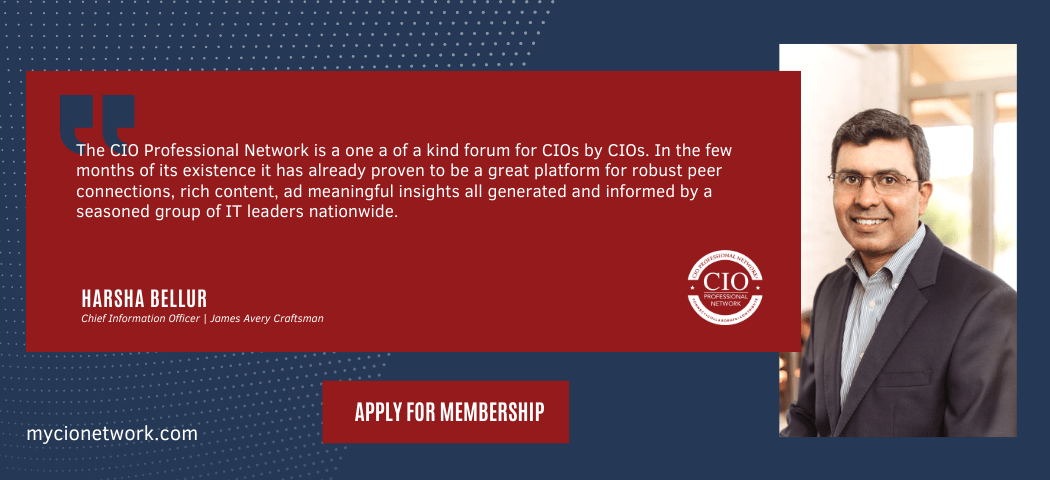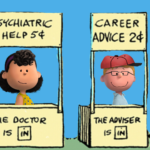Last week, we published an article on how the role of the CIO and technology executive has changed over the last decade. While the passage of time has brought a formidable set of leadership challenges, we found that, broadly speaking, technology leaders have found remarkable (and increasing) success in communicating their visions and unifying workplaces. 2018 has brought dramatic technological changes, accompanied by new challenges, but the best leaders have constantly kept pace and continued to set industry standards.
With this past data in mind, the question of what obstacles the future holds for technology executives looms as well. Technological changes and market shifts always affect generations of leaders, but some of the challenges in 2018 – and moving forward – seem particularly impactful. Security, for example, will certainly remain a priority for IT leadership. There are also many obstacles raised by security that have little to do with traditional data protection. In a similar vein, recent research claims that IT talent will be even more scare in 20 years than it is now. Finally, some of the most recent technology disruptions – innovations like ridesharing or blockchain – are already changing cities and markets in ways few could have foreseen, suggesting that future disruptive innovations could be equally transformative. 2018 remains a good year to be a technology executive, but the obstacles of security, IT talent and disruption will challenge future leaders in new and important ways.
Security
Every year, security breaches bring businesses and governments to their knees. Data leaks are perhaps the most visible examples, but they represent only one type of vulnerability. Ransomware – a particularly vicious brand of attack that encrypts data until the target pays a “ransom” – is a relatively new strain of attack that has already crippled major cities like Atlanta and Baltimore. It’s easy to find evidence of horrendous ransomware attacks beyond these stories, and keeping operations safe from ransomware, data breaches or any other future attacks ranks highly on every technology leader’s list of responsibilities. “With all the different types of malware and numerous hacker groups,” Gene Berry, CIO for One America, told the National CIO Review, “the risks and threats are constantly evolving.”

The catastrophic consequences of security failures are chilling, but the constant, day-to-day pressures of security maintenance have a high cost as well. Protecting a company or organization from security attacks takes a tremendous amount of time and energy, and research suggests that these demands hold leaders back from pursuing other important objectives. Logicalis published a survey of CIOs over 2017 and 2018 and found that 33% of CIOs had to cancel new projects because of security concerns while 70% said that security was a barrier to cloud services adoption. Logicalis also found that most leaders spend between 60% and 80% of their time on day-to-day tasks. “Indeed,” the report argued, “CIOs’ responses suggest that security is a key delaying factor when it comes to any IT project delivery, let alone digital transformation.”
Taken together, the constant threat of security breaches and the pressure that this threat can put on an IT department pose significant challenges for technology leaders in the future. Clearly, the best CIOs and CTOs will find ways to solve both security crises and the day-to-day demands of keeping companies safe. Security threats shift form constantly though, as the rise of ransomware demonstrates, and it doesn’t take long to imagine future threats that are just as menacing. For both current and future leaders, the effective management of security risks and day-to-day demands will define a great deal of their effectiveness.
Talent
We’ve written before about how the best technology leaders attract IT talent, and the ability to find these employees will become increasingly important in the coming decades. Even now, many employers struggle to find employees with the right digital skills. A report sourced by Capgemini and LinkedIn found that “over half (54%) of organizations agreed that the digital talent gap is hampering their transformation programs and that their organization has lost competitive advantage because of a shortage of digital talent.” Beth O’Rorke of Blue Cross Blue Shield of Massachusetts told the National CIO Review that, “There’s definitely a war for talent, and I think being in the Boston area, even more.” O’Rorke has been successful so far in her position, but her opinion of the talent market shows that many leaders struggle to find the right people to fill their key roles.

There is considerable evidence that IT hiring will be even more challenging in the near future. Samantha McLaren, writing for LinkedIn’s Talent Blog, predicted staffing problems in a recent article. She observed that some researchers predict a 1.1 million worker gap across technology, media, and communications by 2020. “Fast forward to 2030, and that deficit may reach 4.3 million, or 59 times Alphabet’s entire workforce,” McLaren continued. “And since companies across all industries already struggle to find great digital talent, that’s a big problem for everyone.” A shortage of qualified IT workers isn’t just a problem for Silicon Valley companies – the ubiquity of technology use and dependence across every industry dictates that a talent gap will have wide-ranging effects.
Technology leaders will face a significant shortage of qualified workers in the next few decades, and responses to these shortages may shape their careers. However, as dire as the hiring picture looks at first glance, there is reason for encouragement. McLaren also notes that there may be an abundance of employees with at least some level of technical skills in the future, prompting her to conclude that, “while highly skilled candidates will be in short supply, the companies that come out on top may be those that focus on training and upskilling employees.” Dennis Yang, CIO for the MPAA told us that developing internal talent and encouraging employee growth and retention make up a huge part of his employment strategy. He elaborated, “If you don’t talk to your team and find out what they’re interested in, they will probably look for another position outside the organization.” Leaders may face unprecedented hiring challenges in the 2020s and 2030s, and the evidence here suggests that those who invest in existing talent may be the best prepared to handle this obstacle.
Disruptive technology and strategies
Disruption can come from new technology, new business strategies or both, and will continue to challenge technology leaders in the future. New technology – such as smartphones or the Internet of Things – has already drastically impacted markets and businesses in the past decade, changes that have significant implications for technology leaders. While it would be foolish to try to pinpoint specifically which new innovations or strategies will happen in the next 10 years, or how exactly they will affect business and technology leaders, continuing disruption in the 2020s and 2030s is a near certainty. How CIOs and CTOs respond to dramatic changes will set them apart from their peers as time passes.

For an example of how disruption can affect leaders in technology, business and government, one can look to the current (and longstanding) battle between Uber and New York City. Most readers are well aware of tensions between the city’s government and the ridesharing service, and this recent New York Times article highlights some of the most prevalent issues in this years-long saga. As the article points out, the subways have become a battleground as well, with many riders claiming that Uber is now something of a necessity given the current state of New York’s subway system. Regardless of which side readers may take between New York and Uber, it’s clear that ridesharing technology has caused disruption and problems for many municipal governments. As similar services like Airbnb grow in popularity as well, local leaders will have to decide how much regulation (if any) is the answer.
Blockchain, another source of disruption, also has potential ramifications across a variety of industries. Blockchain is most commonly associated with the cryptocurrency Bitcoin, but there are many other applications that leaders are eager to take advantage of. IBM, for example, is experimenting with using blockchain for banking operations, while Major League Baseball is launching a trading game based on the technology. As major companies start to adopt this new form of information and storage, even more future possibilities across many different business fields will start to come into focus.
The challenges that CIOs, CTOs and other technology executives will face because of disruption certainly vary greatly based on industry and specialization. Phil Crawford, CTO for Godiva, told us that, “AI will be a game changer in our industry. It will improve our internal support, optimize infrastructure, be a predictive moderator for production systems, enhance the customer experience, and improve our inventory management.” Sarah Naqvi, CIO for HMSHost, sees mobile payments as a key source of change. She told us, “more and more consumers are utilizing mobile payment solutions. The ongoing disruption is to align with those customer demands, and to adapt to those technologies.” CIOs face different forms of disruption depending on their specific industry, but the constant pace of technological change demands that the best leaders are constantly ready to adapt and evolve.
Conclusions
Change and challenges are constants in any business, and the best technology leaders are always ready for both. Over the next two to three decades, CIOs and CTOs will be tested more than ever on their efforts to ensure security, push for change in their organizations beyond day-to-day operations and employ the best available talent. Whether these leaders find or internally develop their talent is an open question for now, but the best executives and directors will find some way to make sure their teams are always fully-staffed. Finally, they’ll also have to face significant disruption, the examples of which shown here demonstrate that one can never tell what will change next.
If our interviews, the surveys and articles here show one thing though, it’s that the best leaders will always find a way to overcome challenges. Parts of the future may look menacing, but obstacles will always face leaders in any industry. CIOs and other technology leaders will also surely find ways to drive greater growth than ever before, and many of them may find solutions to the problems presented here that few could predict. The future may be challenging, but it is also bright for the best technology leaders.










